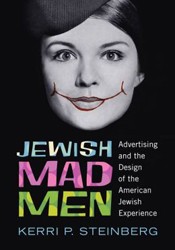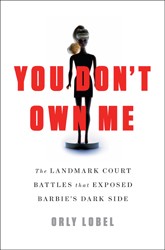Earlier this week, Kerri P. Steinberg wrote about the Jewish women in advertising a in 1960s New York. She is the author of the recently published book Jewish Mad Men: Advertising and the Design of the American Jewish Experience and has been blogging here all week for Jewish Book Council’s Visiting Scribe series.
 Growing up in the seventies fully embracing the spirit of funk and disco music in my fancy footwork and swiveling hips, my ears took it hard upon hearing that Jews have no rhythm. I, for one, knew otherwise. Even if this assertion were true, I would argue that what some Jews lack on the dance floor others have more than offset with the quick tempo and intellectual wittiness they have contributed to American advertising.
Growing up in the seventies fully embracing the spirit of funk and disco music in my fancy footwork and swiveling hips, my ears took it hard upon hearing that Jews have no rhythm. I, for one, knew otherwise. Even if this assertion were true, I would argue that what some Jews lack on the dance floor others have more than offset with the quick tempo and intellectual wittiness they have contributed to American advertising.
Historically, Jews had to be one step ahead to out-maneuver a hostile world, especially during the height of anti-Semitic pogroms in the late nineteenth century. Quick thinking, adaptability, and resilience — all synonymous with creativity — became instruments of survival both in the Old World and as they transitioned into the new. The Jewish fondness for text found new forms of expression in an open society, one of them being copywriting. Beginning with Albert Lasker in the 1920s (sole owner at age 32 of the Chicago based agency Lord and Thomas, later to become Foote, Cone & Belding), Jews have had an affair with copywriting. Catchy klitchiks (an unexpected twist in a piece of copy) made much Jewish copywriting memorable. Of course, there were the legendary taglines that spelled out a product’s Jewish associations like, “You Don’t Have to Be Jewish to Love Levy’s Real Jewish Rye,” scripted by Jewish copywriters at the two-thirds Jewish owned firm, Doyle Dane Bernbach (DDB). But from “Mama mia, I can’t believe I ate the whole thing,” to “Plop, plop, fizz, fizz, oh what a relief it is,” to “Try it, you’ll like it,” even non-Jewish products like Alka Seltzer — first a client of DDB, then a client of the swanky 1960s agency Wells, Rich, Greene — have a whiny, deprecating, Jewish sensibility to thank for their notoriety.
From the birth of copywriting in the twenties, to the creative revolution of the sixties, attributed to DDB, Jewish cleverness has certainly made a lasting impression on Madison Avenue. Equally, if not more interesting though, is how advertising brought Jews from the outside to the inside of American life. Sure, Jewish moves on Madison Avenue shaped the industry. But, all the mundane ads that, albeit unknowingly, integrated the klitchik or the questioning sensibility of New York Jews, unknowingly also universalized the particularities of Jews. Intrusive and colonizing of our precious space and time, advertising can easily be dismissed as the background chatter of modern life. However, it is precisely because of its ubiquitous presence and influence that we should heed advertising. Doing so teaches us how Jews moved on Madison Avenue, and how Madison Avenue moved the Jews.
Kerri P. Steinberg is an associate professor of art history at Otis College of Art and Design in Los Angeles.
Related Content:
- Reading List: Jews in Show Business & Entertainment
- Essays: The Sparks of History
Kerri P. Steinberg is an associate professor of art history at Otis College of Art and Design in Los Angeles.



